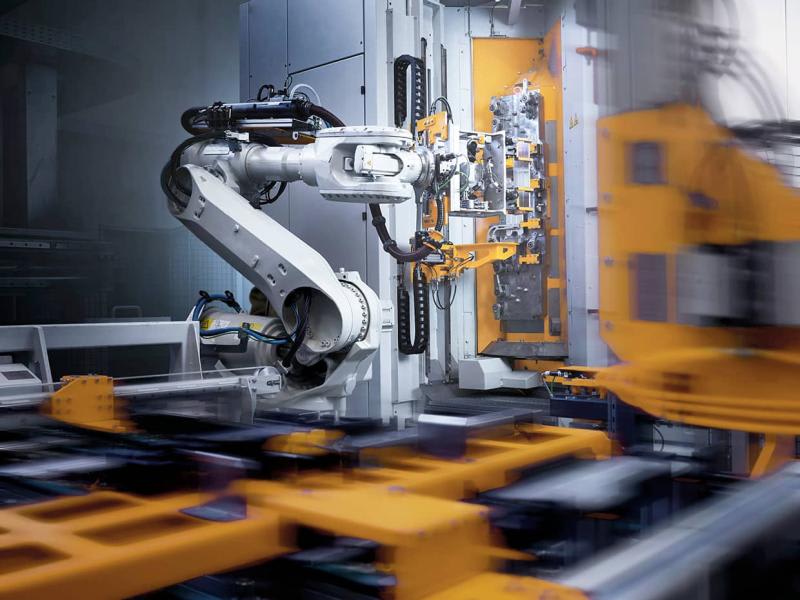Key takeaways:
The automotive industry stands at the crossroads of extraordinary technological innovation and mounting cybersecurity challenges. With the rise of software-defined vehicles (SDVs) and AI integration, alongside increasingly stringent global standards, the landscape is evolving at an unprecedented pace. These advances bring incredible opportunities, as well as risks that demand urgent strategies for mitigation.
Building from our insights in our 2025 automotive industry outlook, some of RSM’s leading automotive specialists share their expertise and perspectives on how technology and cyber security is evolving in the automotive landscape.
SDVs and the evolving automotive ecosystem
SDVs are currently reshaping the automotive landscape. Defined by their ability to house complex software within zonal control architectures, these vehicles are reducing hardware dependency and elevating the driving experience to new heights. With the SDV market projected to grow from $213.5 billion in 2024 to an astounding $1.23 trillion by 2030, representing a compound annual growth rate (CAGR) of 34%, there is a lot of promise in this area. These automakers are introducing integrated systems that provide seamless updates and advanced functionalities, meeting growing consumer demands for enhanced personalisation and operational efficiency. Grand Lui, Partner & Manufacturing Leader for RSM in Canada, observes, “You can’t separate SDVs from the broader digital ecosystem anymore—consumers anticipate a streamlined, connected experience. For manufacturers and suppliers, this means new opportunities around partnerships with technology firms and acceleration through collaborative innovation.”
Atul Ojha, Partner & Cyber Engineering Leader for RSM in Canada highlights, “One of the biggest opportunities I see is the creation of a centralised architecture. To bring all the players in the supply chain together, that is a huge opportunity. With SDVs, electric vehicles (EVs), and hybrids, we are in the world of connected vehicles. There is a huge opportunity in vehicle to everything (V2X) and autonomous driving. However, we also cannot afford to ignore the problem of how we can not only enable it but also the cybersecurity considerations.”
The transition to software-defined vehicles is not without its challenges. While centralised software systems offer efficiency, they simultaneously expand the attack surface for potential cyber risks, leaving manufacturers grappling with securing these systems while delivering the promised performance.
Modern vehicles equipped with advanced technologies are often designed to monitor a range of driver behaviours. This raises important questions for consumers, such as what protections are in place and how their privacy is safeguarded by these built-in systems.
Simultaneously, AI is pushing major advancements across the industry, becoming a central pillar in next-generation automotive technology. AI-powered innovations are revolutionising advanced driver assistance systems (ADAS), autonomous driving capabilities, predictive maintenance, and user-interface enhancements powered by advanced natural language processing (NLP). The automotive AI market is expected to grow substantially, with its predicted value increasing from $4.29 billion in 2024 to $14.92 billion by 2030. Self-parking technologies and hands-free highway navigation, like General Motors' Super Cruise feature, are on their way to becoming standard offerings. Machine learning algorithms enable real-time maintenance predictions that prevent mechanical failures, improve safety, and reduce costs, while digital twins offer virtual replicas for accelerated production cycles and enhanced quality control.
Ojha elaborates, “A key part of digitisation is providing a much better enhanced user experience. The name of the game right now – just like any digital transformation – is user experience. Advanced monitoring systems, powered by AI and machine learning can proactively identify issues before breakdowns occur, enabling predictive maintenance and greater safety.”
Challenges, however, remain. AI-driven innovations are vulnerable to risks like prompt injection attacks, model evasion, and unauthorised firmware updates. Instances such as the late-2024 exploitation of AI vulnerabilities in Qualcomm’s FastRPC mechanism underscored these weaknesses. “The industry must validate every data packet in real time, at every touchpoint, to minimise vulnerabilities,” argues Ojha, advocating for proactive Zero Trust Architecture to strengthen resilience.
Addressing cybersecurity challenges in automotive innovation
The integration of advanced technology has brought the automotive industry face-to-face with complex cybersecurity challenges. Vehicle technology, now deeply intertwined with software, exposes both consumers and manufacturers to varied threats. Data breaches have already targeted major automakers, with Subaru and Kia being examples of where vulnerabilities in software portals and connected networks left millions of vehicles and consumer data at risk. Over-the-air (OTA) updates present another double-edged sword, offering the benefits of real-time functionality improvements but remaining susceptible to exploitation when encryption fails or authenticity checks are bypassed. Lui highlights, “Whenever a system is connected to the internet, vulnerability is inevitably present. The challenge for manufacturers is finding the right balance between advancing connected features and securing those very connections against evolving threats.”
Modern vehicles are increasingly adopting advanced features like voice assistants and autonomous driving capabilities, but these innovations remain particularly vulnerable to cyberattacks. Mitigating such risks demands a higher standard of analysis and robust security measures. Additionally, the growing reliance on electric vehicle charging infrastructure and cloud connectivity introduces additional cyber risks that need systematic management. A lack of transparency within the technology supply chain—whether from Tier 1, Tier 2, or Tier 3 suppliers—further complicates effective cybersecurity oversight, creating gaps that must be urgently addressed.
Countermeasures are underway as the industry invests in defence-in-depth strategies designed to secure connectivity at multiple layers, ensuring protection against diverse cyber threats. The global adoption of regulations, such as the EU’s AI Act, supports the development of robust cybersecurity frameworks while fostering consumer trust. “All players in the automotive chain must commit to security by design principles. Anything patchy will no longer suffice,” says Ojha. He emphasises, “It is no longer adequate to approach security as an afterthought or attempt to retrofit it late in the process. Every stakeholder in the supply chain must embed both security and privacy by design. This dedication must extend to all levels—the data layer, connection layer, authentication layer, and more. Establishing comprehensive protective measures and ensuring reliable fail-safe systems ultimately make the entire ecosystem more resilient against disruptions.”
Hydrogen power and personalisation as key industry drivers
Though EVs have dominated the conversation in the last few years, hydrogen-powered vehicles are gaining traction as a viable alternative, particularly for addressing the limitations associated with current EV technology. Companies like Toyota have shifted focus to hydrogen solutions, aiming to circumvent energy challenges such as battery efficiency in colder climates as well as the strain put on existing energy grids. Ojha predicts, “The transition from internal combustion engines to hydrogen represents the future. EVs and hybrids are merely transitional steps. Hydrogen is coming from the left field and going to shake up the whole industry. That’s where the future is, and several manufacturers are already making tangible progress in hydrogen technology.”
On another front, hyper-personalisation is transforming the driving experience, a trend fuelled by consumer demand and AI advancements. Today, cars can analyse consumer data to create tailored experiences. Features like context-based navigation alerts and energy optimisation advice specific to driving conditions are now being introduced, while holistic infotainment systems offer seamless integration of navigation, communication, and entertainment. Ojha observes, “Personalisation means seamlessly connecting navigation, media, and all other vehicle functions to create a unified experience. This level of integration plays an increasingly central role in the modern automotive environment.”
A cautious yet promising outlook for the future
The automotive industry in 2025 stands on the threshold of revolutionary transformation, bridging groundbreaking technological advancements with unprecedented challenges in cybersecurity and supply chain resilience. Software-defined vehicles, AI-driven personalisation, and the promise of hydrogen as an energy source are signalling an era of innovation poised to redefine mobility. As Ojha puts it, “AI and machine learning will be essential to safeguarding the automotive industry’s future, particularly given the massive volume of transmitted data. Human oversight alone cannot cope with this scale; only advanced AI and machine learning platforms can provide the necessary level of vigilance.”
However, these opportunities will only materialise when coupled with robust architecture, zero-trust security frameworks, and transparent, collaborative approaches among manufacturers, suppliers, and technology leaders. Navigated wisely, this challenging road ahead holds the potential for profound technological and operational achievements.
Contributors






